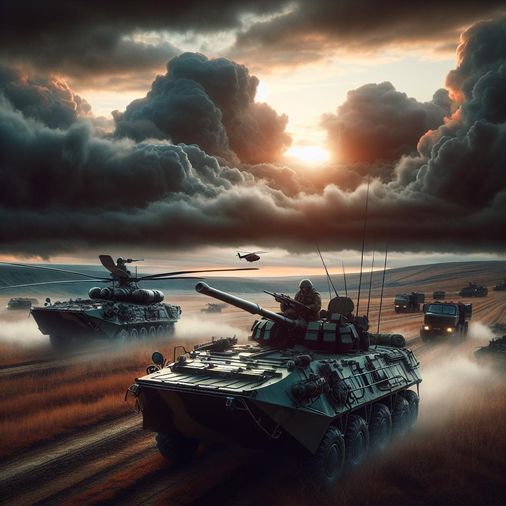Heightened Tensions as Ukraine Launches Military Incursion into Russia's Kursk Region

In a significant escalation of the ongoing conflict between Ukraine and Russia, the Russian government has declared antiterror measures in the Kursk region and surrounding areas, following a recent military incursion by Ukrainian forces. The announcement on August 10 was made by the National Anti-Terrorism Committee, with Aleksandr Bortnikov, the head of the FSB intelligence service, attributing this decision to Ukraine's unprecedented actions aimed at destabilizing the situation in these regions.
This declaration comes after a Ukrainian military strike on an airfield in the Kursk region on August 9, prompting Russia to announce a federal-level emergency in the area. The Russian Defense Ministry has responded by deploying additional military resources, including artillery, tanks, and Grad multiple-launch rocket systems, to fortify its defenses in the region. State-run media has reported significant troop movements, emphasizing the seriousness of the situation.
The conflict in Kursk is noted to be the most substantial attack on Russian soil since President Vladimir Putin initiated the full-scale invasion of Ukraine in February 2022. Although the details remain murky, the Russian military claims that approximately 1,000 Ukrainian troops, along with more than two dozen armored vehicles and tanks, are participating in the incursion. Ukrainian officials have not officially confirmed these figures.
Since the onset of military actions on August 6, Ukrainian forces reportedly have gained control over around 600 square kilometers of territory and numerous settlements in the region. Following the announcement of antiterror measures on August 10, the National Anti-Terrorism Committee outlined actions that could include the eviction of residents, restrictions on transport, heightened security around sensitive sites, and even wiretaps to monitor communications.
Ukrainian President Volodymyr Zelenskiy remarked that Russia must face the consequences of its invasion, though he refrained from directly referencing the recent offensive. In a video released late on August 9, Ukrainian soldiers purportedly displayed a Ukrainian flag at a Gazprom facility located in Sudzha, just over the border in the Kursk region. While the mayor of Sudzha denied the claims of Ukrainian control, he confirmed that evacuation efforts were underway in the city.
A Ukrainian lawmaker asserted that their military operations were advancing successfully and inflicting damage on Russian forces in the Kursk region. "They have managed to surprise the enemy at a place where Russian forces were the weakest," remarked Roman Kostenko, highlighting the professionalism of the advancing troops.
In a separate military operation, the Ukrainian military reported striking an airfield in Russia's Lipetsk region on August 9, resulting in extensive damage and multiple detonations. Satellite images released by Planet Labs suggest the attack caused significant destruction at the airbase, which housed Russian fighter aircraft.
The situation has drawn attention from international observers, including the head of the UN's nuclear watchdog, Rafael Grossi, who has urged both sides to exercise restraint to avoid potential nuclear accidents, especially given the proximity of a significant nuclear power plant in the region.
Meanwhile, Russia's diplomatic mission reported finding missile fragments near the plant but stated there was no evidence of a direct attack on its facilities. Amid this turmoil, verified reports have emerged detailing the destruction of a Russian military convoy in Kursk, reiterating the volatility of the current conflict.
As the situation develops, recent communications from local residents suggest that large public gatherings and events have been restricted by Russian authorities in Kursk through August 11 due to security concerns. The overall sentiment among some local residents reflects an acute awareness of the ongoing war, illustrating the increasingly precarious state of affairs in the region.
Related Sources:
